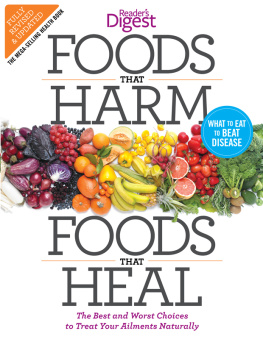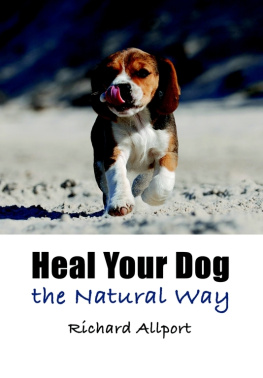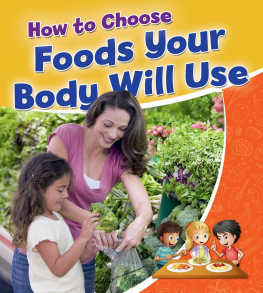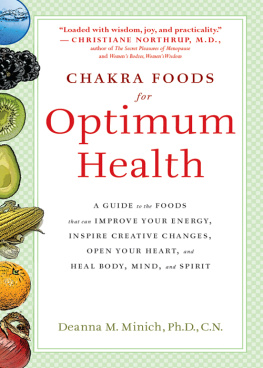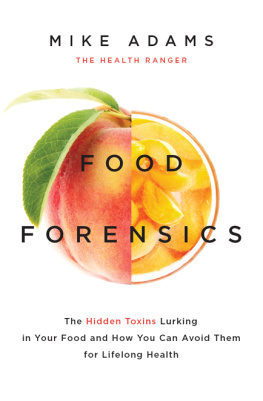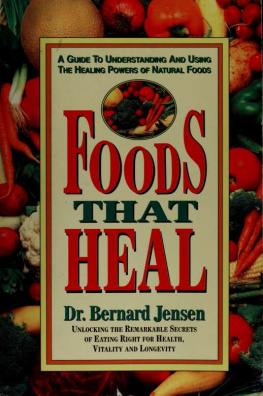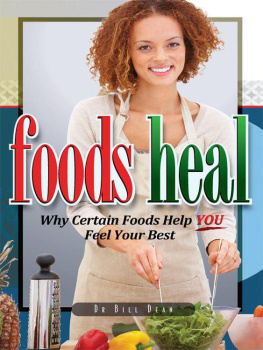Editors of Reader’s Digest - Foods that Harm, Foods That Heal: The Best and Worst Choices to Treat Your Ailments Naturally
Here you can read online Editors of Reader’s Digest - Foods that Harm, Foods That Heal: The Best and Worst Choices to Treat Your Ailments Naturally full text of the book (entire story) in english for free. Download pdf and epub, get meaning, cover and reviews about this ebook. year: 2013, publisher: The Reader’s Digest Association, genre: Children. Description of the work, (preface) as well as reviews are available. Best literature library LitArk.com created for fans of good reading and offers a wide selection of genres:
Romance novel
Science fiction
Adventure
Detective
Science
History
Home and family
Prose
Art
Politics
Computer
Non-fiction
Religion
Business
Children
Humor
Choose a favorite category and find really read worthwhile books. Enjoy immersion in the world of imagination, feel the emotions of the characters or learn something new for yourself, make an fascinating discovery.
- Book:Foods that Harm, Foods That Heal: The Best and Worst Choices to Treat Your Ailments Naturally
- Author:
- Publisher:The Reader’s Digest Association
- Genre:
- Year:2013
- Rating:5 / 5
- Favourites:Add to favourites
- Your mark:
- 100
- 1
- 2
- 3
- 4
- 5
Foods that Harm, Foods That Heal: The Best and Worst Choices to Treat Your Ailments Naturally: summary, description and annotation
We offer to read an annotation, description, summary or preface (depends on what the author of the book "Foods that Harm, Foods That Heal: The Best and Worst Choices to Treat Your Ailments Naturally" wrote himself). If you haven't found the necessary information about the book — write in the comments, we will try to find it.
Editors of Reader’s Digest: author's other books
Who wrote Foods that Harm, Foods That Heal: The Best and Worst Choices to Treat Your Ailments Naturally? Find out the surname, the name of the author of the book and a list of all author's works by series.
Foods that Harm, Foods That Heal: The Best and Worst Choices to Treat Your Ailments Naturally — read online for free the complete book (whole text) full work
Below is the text of the book, divided by pages. System saving the place of the last page read, allows you to conveniently read the book "Foods that Harm, Foods That Heal: The Best and Worst Choices to Treat Your Ailments Naturally" online for free, without having to search again every time where you left off. Put a bookmark, and you can go to the page where you finished reading at any time.
Font size:
Interval:
Bookmark:


A READERS DIGEST BOOK
Copyright 2013 The Readers Digest Association, Inc.
All rights reserved. Unauthorized reproduction, in any manner, is prohibited.
Readers Digest is a registered trademark of The Readers Digest Association, Inc.
Library of Congress Cataloging in Publication Data
Foods that harm, foods that heal : the best and worst choices to treat your ailments naturally/from the editors at Readers Digest. -- Fully revised and updated.
pages cm
Summary: In this completely revised, updated, and redesigned edition, youll find:
- More than 90 health condition entries from arthritis to insomnia to heart disease
- Almost 150 food entries from apples to zucchini, including fast food, additives, and more - Simple ways to eat, cook, and store each food - Food-medicine interactions to be aware of-- Provided by publisher.
Includes index.
ISBN 978-1-62145-001-6 (pbk.) -- ISBN 978-1-62145-013-9 (adobe) (print) -- ISBN 978-1-62145-014-6 (epub) (print)
1. Nutrition--Popular works. 2. Food--Composition--Popular works. I. Readers Digest Association.
RA784.F639 2013
613.2--dc23
2012031559
We are committed to both the quality of our products and the service we provide to our customers.
We value your comments, so please feel free to contact us.
The Readers Digest Association, Inc.
Adult Trade Publishing
South Broadway
White Plains, NY 10601
For more Readers Digest products and information, visit our website:
www.rd.com (in the United States)
www.readersdigest.ca (in Canada)
NOTE TO OUR READERS
The information in this book should not be substituted for, or used to alter, medical therapy without your doctors advice. For a specific health problem, consult your physician for guidance.

SPECIAL
FEATURES
Prebiotics & Probiotics:
Beneficial Bacteria
Dietary Supplements:
Do You Need Them?
Organic Foods:
Are They Worth the Cost?
Fast Food:
Is It Possible to Eat Healthy on the Run?
Dietary Restrictions:
Should You Go Vegetarian, Vegan, Dairy-Free, or Gluten-Free?

SPECIAL
FEATURES
Caffeine:
The Buzz on Our Most Popular Stimulant
Travel:
Eating Healthy on the Road
Superfoods:
Do They Live Up to the Hype?
Snacking:
The Best Way to Beat Your Cravings
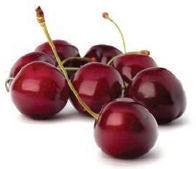
SPECIAL
FEATURES
Glycemic Index and Glycemic Load:
The Power Behind Each Bite
Interaction Warning:
When Food and Medicine Dont Mix
Inflammation:
Eat to Quell the Dangers
Ages and Stages:
Pregnancy & Breastfeeding; Infant; Childhood; Senior
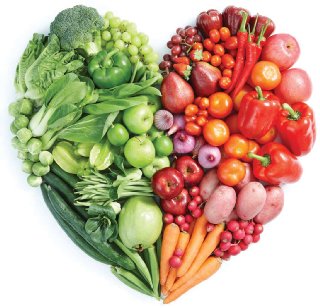
ABOUT THE NEW EDITION
New edition, new foods, new format, and an all new way to look at how diet affects health
Welcome to the 2013 edition of Foods That Harm, Foods That Heal. The first edition of this pioneering book, published in 1997, changed the way we view food and its impact on our bodies, capturing the explosion of scientific research about the links between nutrition and health and highlighting the benefits of fresh whole foods. Whats changed since then?
Well, an apple may still be an apple, but our understanding of the benefits of foods and how nutrients act in our bodies continues to evolve. For a while, weve known that apples have always been a good source of fiber, which can help lower cholesterol. Now weve also identified antioxidants in apples, like procyanidins, which may protect against colon cancer, and quercetin, which helps stave off Alzheimers disease.
Also, food itself and our food supply has continued to evolve. Many foods are now fortified or enriched with added nutrients, from omega-3s in eggs and prebiotics in breads. And foods that were once considered exotic can now be found on more and more grocery shelves. So weve updated the book with dozens of new healing foods, such as passion fruit, which can pump up your immune system, and jicama, which can help strengthen bones. Weve also added more than a dozen ailments that you can prevent or treat by choosing the right foods.
Along with a wealth of new and updated entries, this totally revised edition has been entirely reformatted to make it easier for you to find the facts you need at a glance. This edition of Foods That Harm, Foods That Heal is divided into three sections: Nutrition, Foods, and Ailments. The first section is wholly new and presents the big picture on what you need to know to eat healthy. Turn to this part for an overview on how to get the right balance of carbs, fats, and proteins; whether or not you need a multivitamin or other dietary supplements; when you need to be concerned about pesticides and other chemicals; and how to preserve nutrients when you cook.
The second part of the book is an A-to-Z listing of more than 170 foods with explanations about how they can improve health and help remedy specific conditions. As part of this edition, the food listings contain handy additions such as typical serving sizes, buying and storing tips, and detailed descriptions of their health benefits.
In the third section of the Foods That Harm, Foods That Heal youll find an alphabetical listing of more than 100 ailments. These include health issues that are as everyday as a cold and as serious as cancer. Within each entry, we show which foods can cause or exacerbate that condition, and which can help prevent or treat it. For example, those with lupus should seek out inflammation-taming foods such as broccoli, salmon, and flaxseeds but avoid foods with the compound psoralens, such as celery, parsnips, or parsley.
In addition, throughout the book are special features and sidebars. Youll learn how to eat smart and safe while traveling, figure out whether probiotics are for you, and discover the differences between energy bars. Filled with the latest and most authoritative information plus practical advice on how to put that information to use, this new edition of Foods That Harm, Foods That Heal offers a fresh menu for better living.
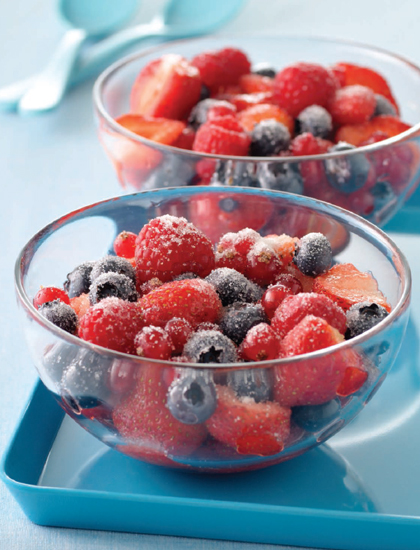

Let thy food be thy medicine and thy medicine be thy food. This advice is as true today as it was more than 2,000 years ago when Hippocrates, the famous Greek physician, coined the phrase. But exactly what foods should you be eating to keep the doctor away? The answer is more complex than you might think. How each food affects you depends on how much of it you eat, when you eat it, and what you eat it with. In addition, how the food is grown, stored, and cooked can make a big difference, as can medications youre taking. For instance, cooking . But cook it too long and it loses a lot of its immunity-boosting vitamin C. To help your body absorb the iron, calcium, and other minerals in spinach, its best to pair spinach with other foods rich in vitamin C. But be careful to wash spinach thoroughly to reduce the likelihood of E. coli contamination. And if youre on a blood thinner such as heparin or warfarin, dont eat too much, as it can interfere with the medication. Despite all of these variables, the basics of good nutrition dont have to be hard to follow. This section will first give you an overview of the substances in our foods that are actually doing all the workthe carbohydrates that give us energy, the vitamins that keep your brain and body functioning, the antioxidants that fight disease, and much more. Here well give you the real deal on what types of fat are good or bad for you, whether low-carb diets really work, and which vitamins and minerals you need more of. Next we tackle the controversial subject of food safety. We cut through all the white noise about whether or not pesticides, additives, and genetically modified foods are really harmful or not, and tell you when its really worth spending more on organic grapes or grass-fed beef. Finally, we sum up the latest science on nutrition to give you simple guidelines on what and how much to eat for vibrant good health, along with tips on the best ways to store foods to preserve freshness and avoid contamination and the best cooking methods to retain or even boost nutrients in your favorite foods.
Next pageFont size:
Interval:
Bookmark:
Similar books «Foods that Harm, Foods That Heal: The Best and Worst Choices to Treat Your Ailments Naturally»
Look at similar books to Foods that Harm, Foods That Heal: The Best and Worst Choices to Treat Your Ailments Naturally. We have selected literature similar in name and meaning in the hope of providing readers with more options to find new, interesting, not yet read works.
Discussion, reviews of the book Foods that Harm, Foods That Heal: The Best and Worst Choices to Treat Your Ailments Naturally and just readers' own opinions. Leave your comments, write what you think about the work, its meaning or the main characters. Specify what exactly you liked and what you didn't like, and why you think so.

